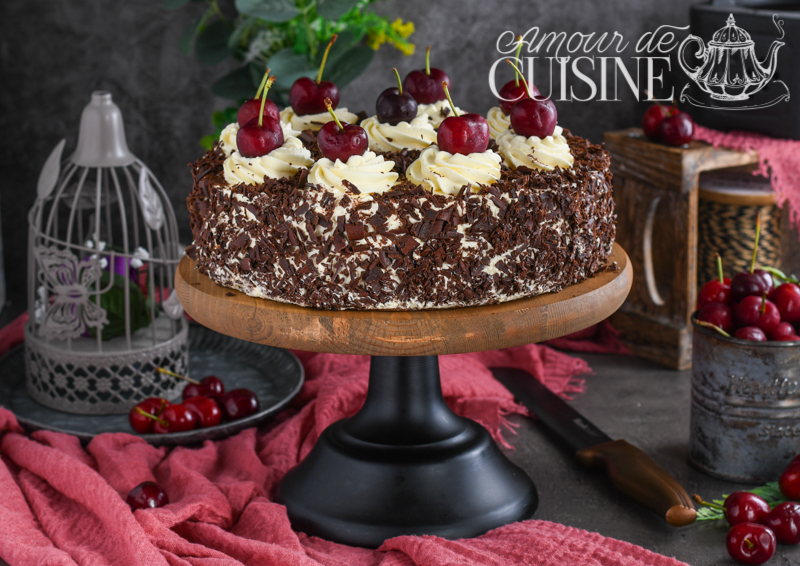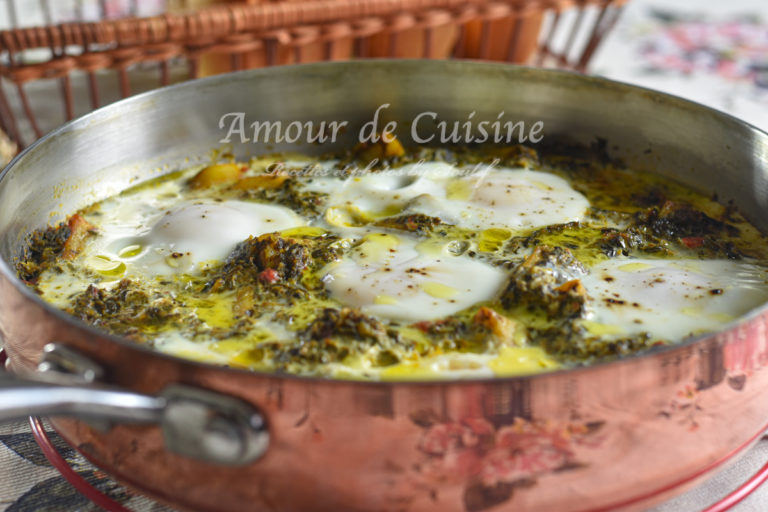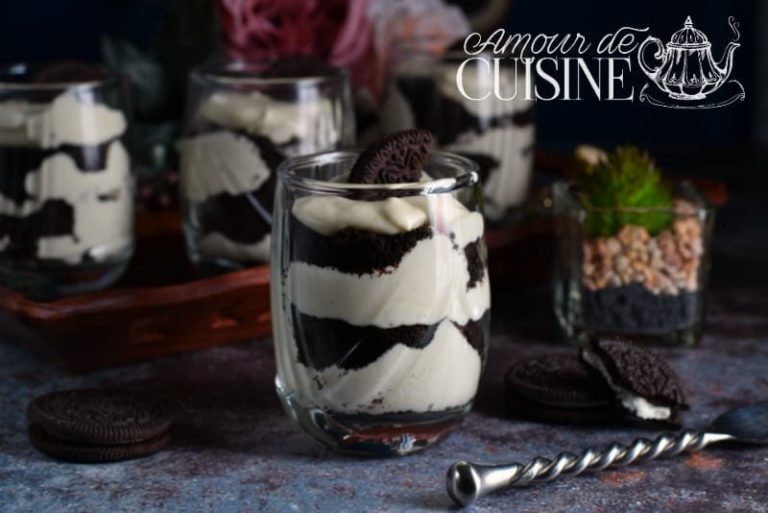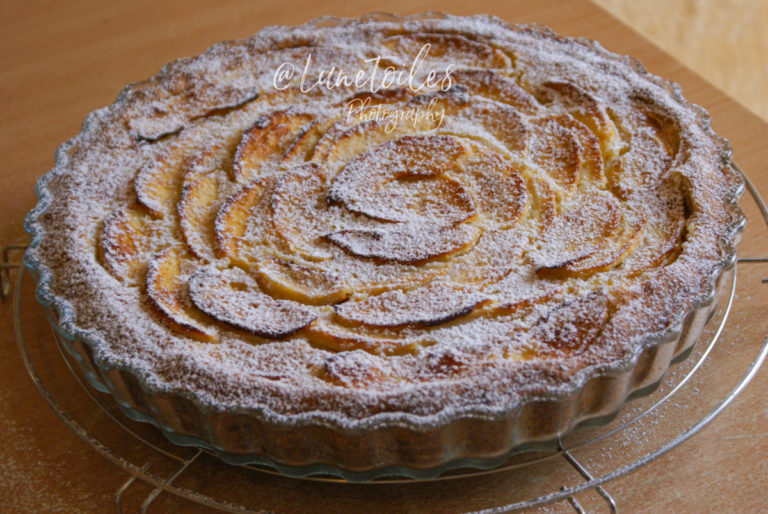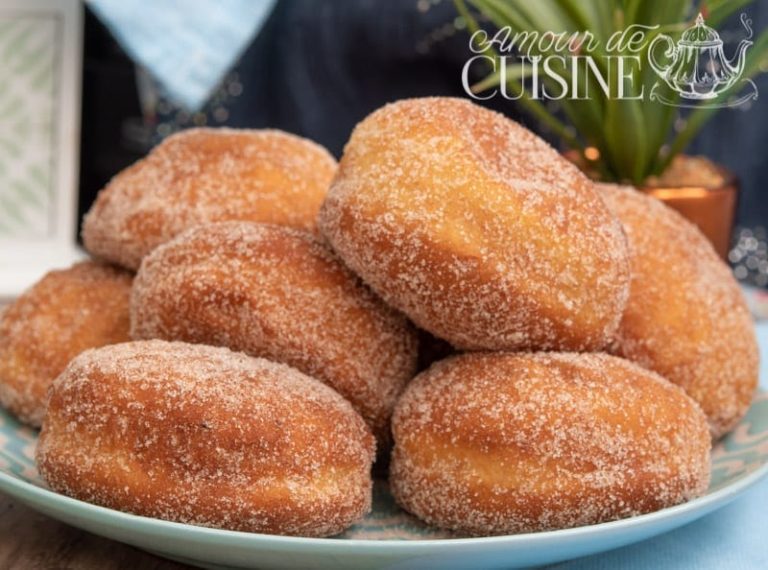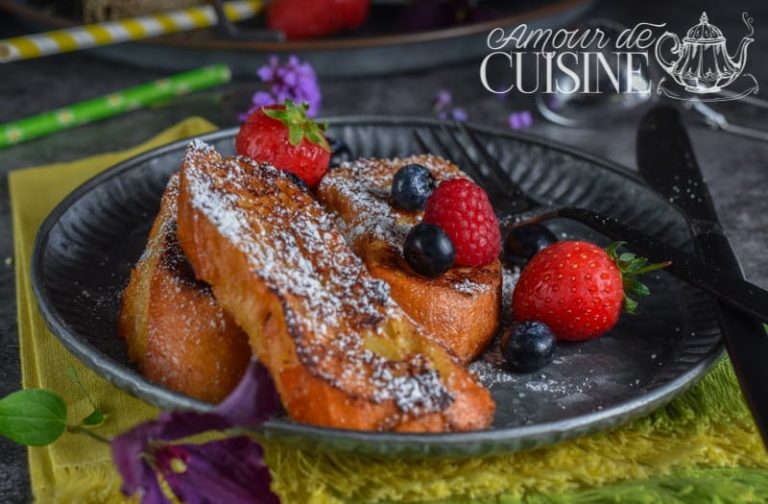The Ultimate foolproof Chocolate Sponge Cake Recipe : Genoise
This chocolate sponge cake genoise stands out for its light, soft and airy texture paired with the deep flavor of chocolate, making it a must to have recipe.
Ideal for crafting birthday cakes or elegant treats like Black Forest, this versatile recipe is a go-to for any occasion.
With simple, budget-friendly ingredients and a straightforward technique, you will achieve a perfectly fluffy and delicate chocolate sponge cake.
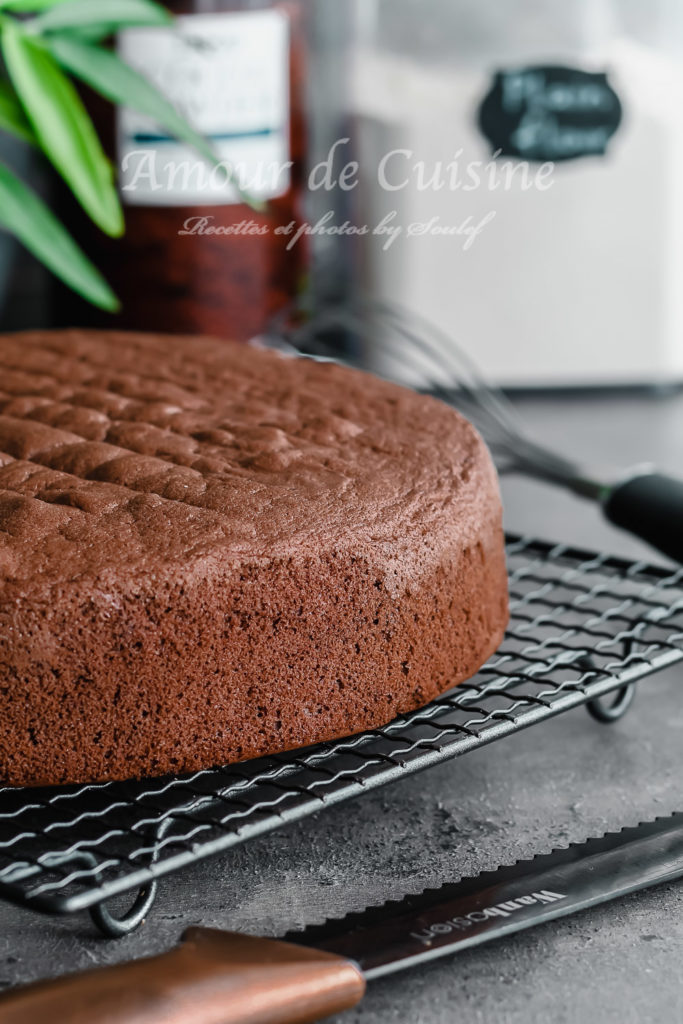
Soft and fluffy chocolate sponge cake
Having a reliable sponge cake recipe is a must in baking, and this chocolate sponge cake is one you can always count on.
Personally, I stick to my tried-and-true recipe unless I come across something equally simple and quick that delivers a soft and delicious result.
This chocolate sponge cake is my go-to favorite. It’s easy to make, uses basic pantry staples, and consistently turns out perfectly.
Whether you’re making a classic vanilla sponge cake or a chocolate version, the technique is the same, ensuring a high, soft, and fluffy cake every time.
Quick and simple, this recipe guarantees a light and fluffy texture, making it perfect for any creation you want to fill and decorate for a delightful treat.
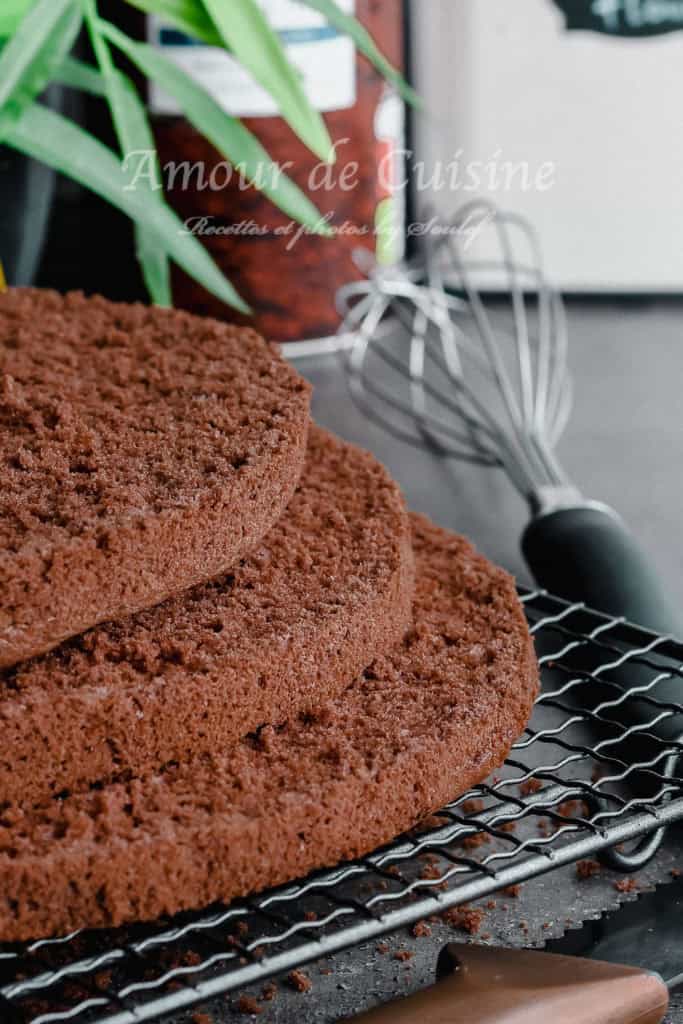
Ingredients you need for chocolate sponge cake
For a 21 cm diameter mold and a 5 cm high sponge cake:
- 4 eggs
- 120 g caster sugar
- 90 g all purpose flour
- 30 g cocoa powder
- 1/2 tsp baking powder
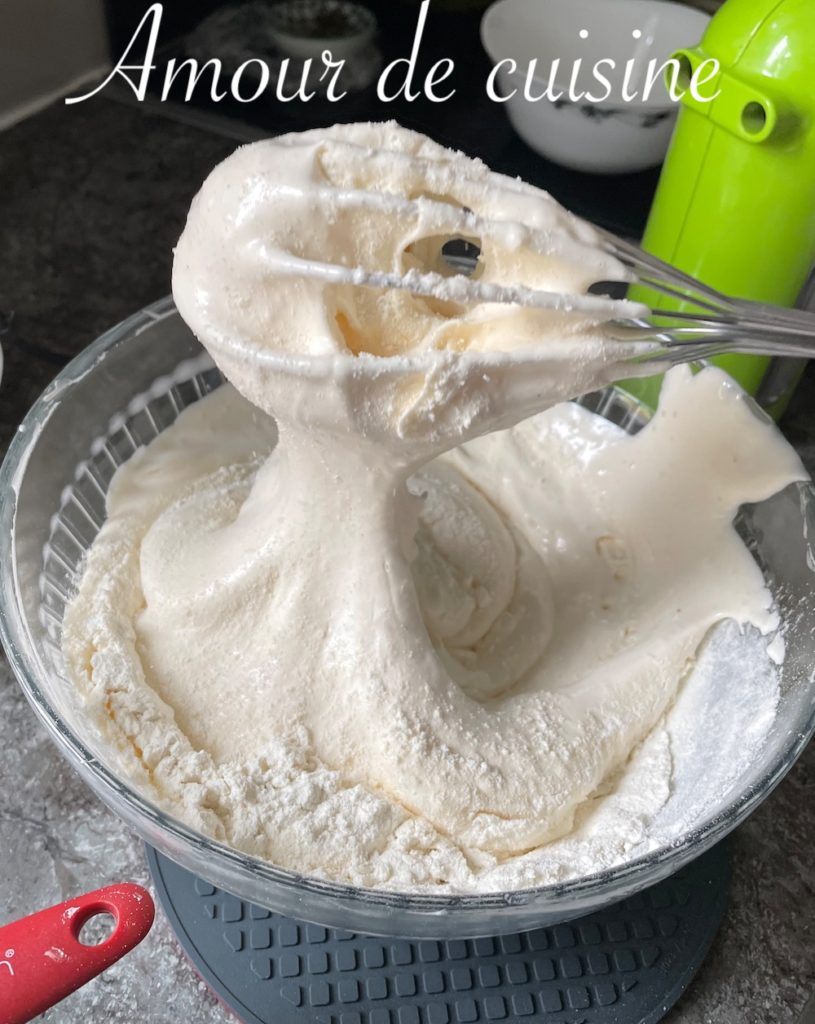
how to make the perfect chocolate (cocoa) sponge cake ?
– Prepare the Sugar and Egg Mixture
- Whisk the sugar and eggs together until they form a creamy, firm foam.
- Whisk for 10 to 12 minutes, using an electric mixer or a stand mixer with a whisk attachment.
- The fluffier the mixture, the lighter and taller your sponge cake will be.
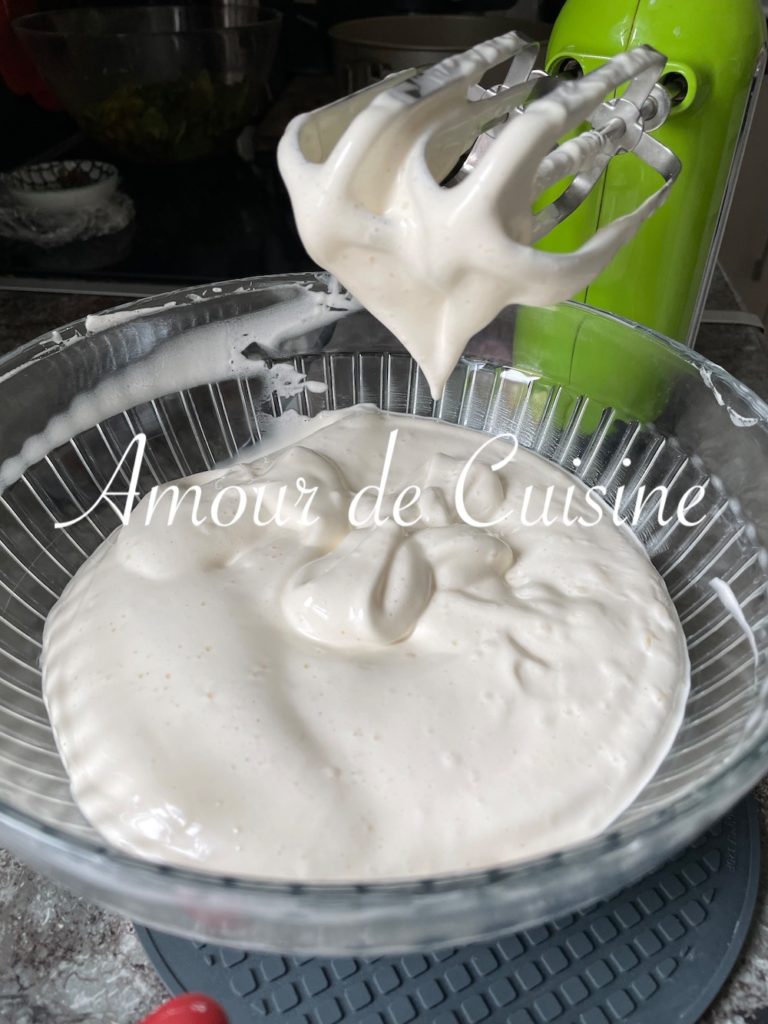
– Incorporate the Dry Ingredients
- Sift the flour, cocoa powder, and baking powder together.
- Add the dry mixture gradually in three batches.
- Switch to a spatula or hand whisk for this step; avoid using an electric mixer to prevent deflating the batter.
- Fold the ingredients gently using upward motions, not circular stirring, to keep the batter airy.
– Transfer to the Baking Mold
- Pour the batter into a 20 cm springform pan lined with baking paper.
- If prepared correctly, the batter should flow into the mold like a ribbon, not a thin liquid stream.
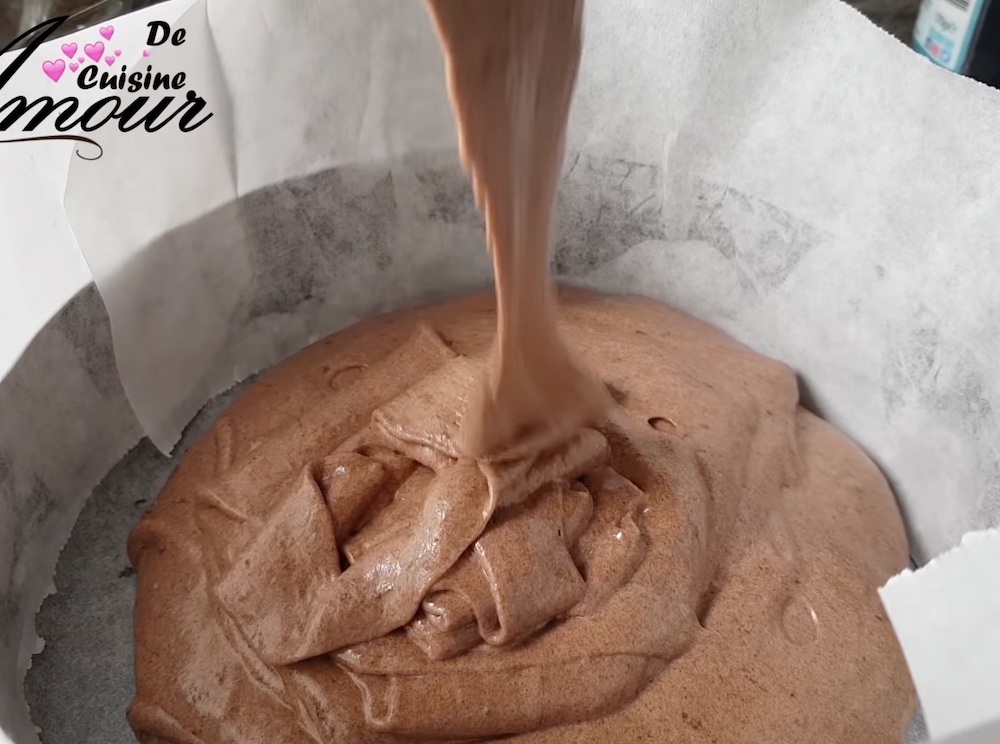
– Bake the Cake
- Bake at 180°C (350°F) for 20 minutes in a fan-assisted or static oven.
- Monitor the baking time; adjust if necessary based on your oven’s heat.
- If the top browns too quickly, reduce the temperature to 170°C or 160°C.
- Be cautious with overly hot ovens, as they can create a crust that prevents the cake from rising properly.
– Cool the Cake
- Once baked, remove the cake from the mold and let it cool on a wire rack.
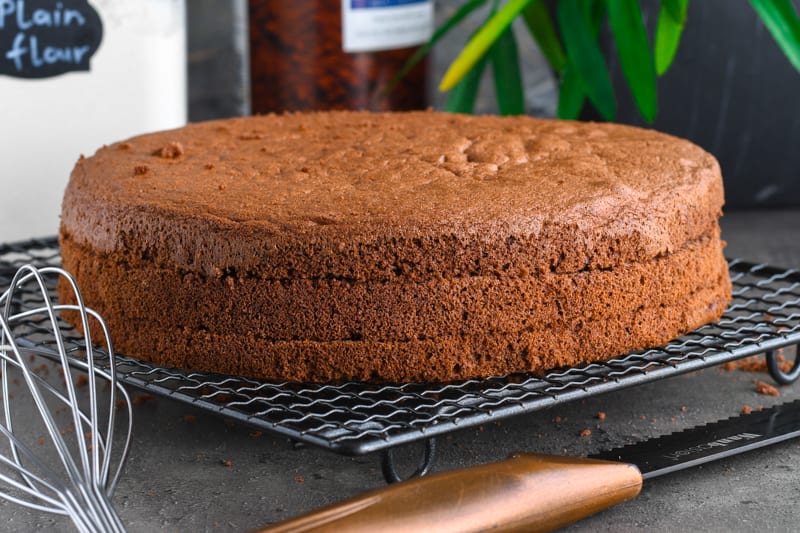
Expert Tips
– Preparation Tips :
- Use Room-Temperature Ingredients: Ensure eggs and other ingredients are at room temperature. This helps achieve maximum volume when whisking.
- Sift Dry Ingredients: Always sift flour, cocoa powder, and baking powder together to remove lumps and evenly distribute leavening agents.
– Whisking Eggs and Sugar :
- Invest Time in Whisking: Whisk eggs and sugar for at least 10-12 minutes until the mixture is pale, thick, and triples in volume. This creates the necessary airiness.
- Test the Ribbon Stage: The mixture should form a ribbon that sits on the surface momentarily before disappearing when the whisk is lifted.
– Folding the Batter :
- Be Gentle: Use a spatula or a large metal spoon to fold in dry ingredients. Avoid overmixing, as this can knock out the air and result in a dense cake.
- Add in Batches: Incorporate dry ingredients in three parts for even mixing and to maintain the batter’s fluffiness.
– Choosing the Right Pan :
- Line Your Pan: Use baking paper to line your pan, ensuring the cake doesn’t stick and can be easily unmolded.
- Correct Size: Stick to the recommended pan size (e.g., 20 cm). A pan that’s too large or too small can affect the cake’s rise and texture.
– Baking :
- Preheat the Oven: Ensure your oven is fully preheated to 180°C (350°F) before baking.
- Avoid Overbaking: Start checking for doneness a few minutes before the suggested time. Insert a toothpick in the center; it should come out clean or with a few moist crumbs.
- Adjust Heat if Needed: If the top browns too quickly, lower the oven temperature slightly.
– Cooling and Handling :
- Cool on a Rack: Let the cake cool completely on a wire rack before decorating or slicing to prevent it from becoming soggy or crumbly.
- Unmold Carefully: Run a knife around the edges before releasing from a springform pan to ensure smooth edges.
– Enhance Flavor :
- Add Espresso Powder: A small amount of espresso powder enhances the chocolate flavor without being noticeable.
- Use Quality Cocoa: Opt for high-quality cocoa powder for a richer, more intense chocolate taste.
– Customizing for Desserts :
- Perfect for Layering: Slice the cake horizontally for layered desserts like Black Forest.
- Brush with Syrup: For extra moisture, brush layers with simple syrup or flavored syrup before adding fillings.
desserts to try
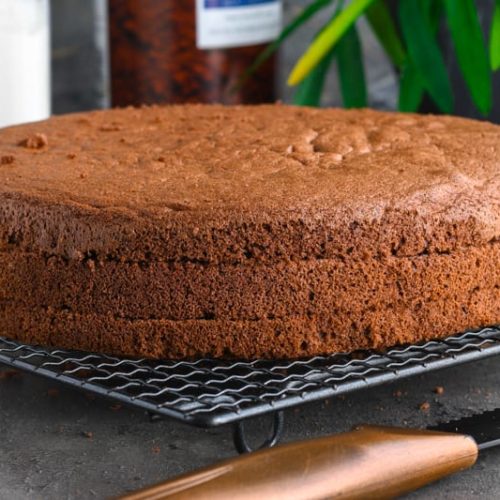
foolproof soft chocolate sponge cake
Ingredients
- 4 eggs
- 120 g caster sugar
- 90 g all purpose flour
- 30 g cocoa powder
- 1/2 tsp baking powder
Instructions
- Whisk the sugar and eggs together until they form a creamy, firm foam.
- Whisk for 10 to 12 minutes, using an electric mixer or a stand mixer with a whisk attachment.
- The fluffier the mixture, the lighter and taller your sponge cake will be.
- Sift the flour, cocoa powder, and baking powder together.
- Add the dry mixture gradually in three batches.
- Switch to a spatula or hand whisk for this step; avoid using an electric mixer to prevent deflating the batter.
- Fold the ingredients gently using upward motions, not circular stirring, to keep the batter airy.
- Pour the batter into a 20 cm springform pan lined with baking paper.
- If prepared correctly, the batter should flow into the mold like a ribbon, not a thin liquid stream.
- sponge cake’s batter texture
- Bake at 180°C (350°F) for 20 minutes in a fan-assisted or static oven.
- Monitor the baking time; adjust if necessary based on your oven’s heat.
- If the top browns too quickly, reduce the temperature to 170°C or 160°C.
- Be cautious with overly hot ovens, as they can create a crust that prevents the cake from rising properly.
- Once baked, remove the cake from the mold and let it cool on a wire rack.

